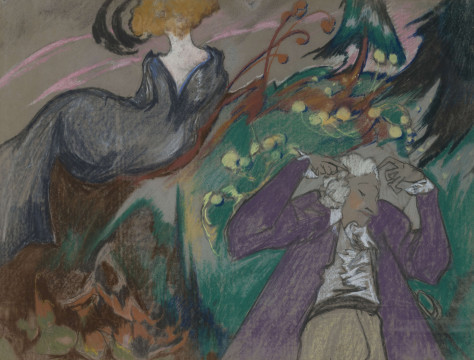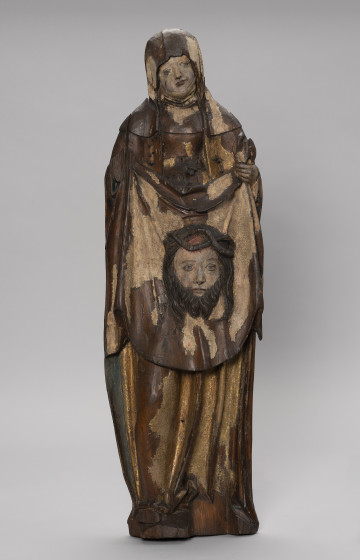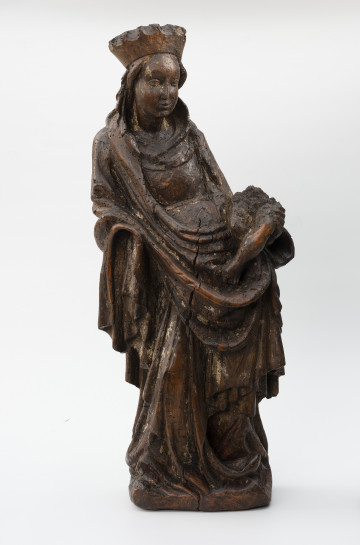
Composition
1916
National Museum in Lublin
Part of the collection: Stanisław Ignacy Witkiewicz
The work of Witkacy - Stanisław Ignacy Witkiewicz, a painter, draughtsman, photographer, playwright, philosopher and art theoretician - is one of the most original phenomena in 20th century Polish art Kompozycja z łabędziami [The Composition with Swans] (1916) dates from the period of the First World War, which Witkacy spent in Russia, where he arrived in 1914, after travelling around Australia, stopping in St Petersburg. After graduating from the local officers' school, he was accepted into the elite Pavlovsky Regiment of Leibgguard, then sent to the front. In 1916, he took part in one of the bloodiest battles of the war - at Vitonier in Ukraine. The wounds he sustained interrupted his participation in the war effort. Despite the dramatic experiences connected with the war and the outbreak of the October Revolution, the artist worked intensely, creating, among other things, an outline of the publication Nowe formy w malarstwie i wynikające stąd nieporozumienia [New Forms in Painting and Resulting Misunderstandings]. The system of philosophical and aesthetic views contained in it, together with the theory of Pure Form, determined Witkacy's later artistic activities in the field of painting and theatre. During his stay in Russia, he created numerous compositions in charcoal and pastel, including portraits of people from the artist's closest environment, works on fantasy and astronomical compositions. It can be assumed that in literary terms Kompozycja z łabędziami refers to the story of a princess enchanted into a bird, described in Piotr Tchaikovsky's musical fantasy Jezioro łabędzie [The Swan Lake], which Witkacy could have seen during his stay in St Petersburg. Music was present in his aesthetic thought; the artist gave it a high rank in the hierarchy of the arts, often uniting it with painting. In his theoretical writings on theatre, despite his aversion to singing and opera, he allowed for the appearance of instrumental music, vocal music and dance as components of an ideal theatrical performance in Pure Form. The female figure depicted in the centre of the composition brings to mind Odette, who can assume human form only at midnight on the shores of a lake. She walks along the dyke dividing the water surface into two parts, accompanied by swans with deformed, sinister heads. They contradict the idea of beauty traditionally associated with this species of birds, being a product of the artist's fantasy manifested in the grotesque vision of reality.
Anna Hałata
Author / creator
Dimensions
cały obiekt: height: 68 cm, width: 50 cm
Object type
drawing
Technique
pastel
Material
coal
Creation time / dating
Creation / finding place
Owner
The National Museum in Lublin
Identification number
Location / status

1916
National Museum in Lublin

circa 1520 — 1530
National Museum in Szczecin

circa 1430
National Museum in Szczecin
DISCOVER this TOPIC
Castle Museum in Łańcut
DISCOVER this PATH
Educational path